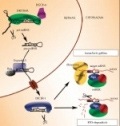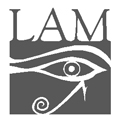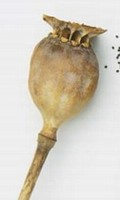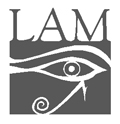The eLitMed.hu medical portal uses computer cookies for convenient operation. Detailed information can be found in the Cookie-policy.
Lege Artis Medicinae - 2008;18(08-09)
Content
[THE IMPORTANCE OF THE RECOGNITION AND TREATMENT OF LIPID METABOLISM DISORDERS IN THE SECONDARY PREVENTION OF CEREBROVASCULAR DISEASES]
[The high world prevalence of cerebrovascular diseases, and the particularly bad morbidity rates of Hungary are well known. The physiological properties of the brain make stroke prevention outstandingly important. Effective prevention will be reflected in the reduction of the late complications that are otherwise common and expensive to treat. Because of the common simultaneous development of stroke, cardiovascular and peripheral vascular diseases, overall vascular disease prevention is preferred, even if the various vascular diseases manifest in different degrees in a patient. Hungarian data also indicate the high risk of recurrence of cerebrovascular diseases, therefore, the importance of secondary prevention is obvious. Large international studies have proven the strokepreventing effect, and, by a pleiotropic drug action, additional benefits, of the efficient treatment of blood lipid disorders. Consensus conferences in recent years defined clear and even stricter lipid-lowering target values, mostly to be reached by “double inhibition”, bile acid binding resins, fibrates and nicotinic acid derivatives, beside the most common statin treatment. Neurological and stroke departments and clinics play a pivotal role in vascular prevention.]
[PSORIATIC ARTHRITIS AND ITS PHARMACOLOGICAL TREATMENT MODALITIES]
[Psoriatic arthritis is a destructive form of inflammatory arthritis that occurs in 10-30% of patients with psoriasis. Its prevalence is about 10.000 to 20.000 in Hungary. The pathogenesis includes both genetic and immunological factors. Average disease progression based on functional status is, on average, 0.05 HAQ score/year. The traditional disease-modifying antirheumatic drugs (DMARDs) are not always successful in controlling the disease and preventing joint damage. Based on the pathogenesis of psoriatic arthritis, several new drugs (anti-tumour necrosis factor alfa, or anti-TNF-α) have been introduced in the therapy, which have been found to be effective both in psoriasis and psoriatic arthritis. The development of the Biological Response Modifying Drugs (BRMDs) makes treatment possible for patients with the most serious, high activity disease, who are refractory to other therapy. There is no significant difference in efficacy among the different biological agents (etanercept, infliximab, adalimumab). The review presents the traditional DMARDs, as well as the indications, effectiveness, side effects and the national prescription regulations of the anti- TNF-alfa agents. Both DMARDs and TNF-α inhibitors can be safely used in psoriatic arthritis under strict specialist control.]
[SIGNIFICANCE OF MICROCIRCULATION IN ARTERIAL DISEASES]
[The microvascular bed is an anatomical entity, which constitutes of blood vessels smaller than 50 μm (i.e. arterioles, capillaries and venules), and its major function is the nutritive perfusion of organs and tissues. In search of cardiovascular diseases, there are growing evidences that impaired microcirculation plays an important role in the patophysiology of arterial diseases. Beside the well known consequence of diabetic microangiopathy in the development of diabetic complications, new data support the role of microcirculation in the pathogenesis of hypertension and atherosclerosis, as well. There are different non-invasive methods for the investigation of the microcirculation. Capillarmicroscopy, laser doppler flowmetry and transcutaneous oxygen pressure measurement are used not only in the scientific research, but also in the clinical practice. Laser doppler flowmetry gives us the possibility to assess microvascular endothelial function and other early microcirculatory disturbances. Capillarmicroscopy is particularly useful in the diagnosis of different autoimmune diseases. Transcutaneous oxygen pressure measurement is mostly used in the diagnosis of critical limb ischemia, because it has proven prognostic relevance. Vascular specialist should prescribe all investigations. General practitioners play key role in the early diagnosis of vascular diseases that can be achieved through the screening of patients at risk for vascular disease. In case of suspected vascular disease, the patient should refer to angiology outpatient clinic, to decide further investigations and prescribe therapy. The conservative treatment includes the complex cardiovascular risk management supplemented with medication, acting on the microcirculation.]
[CONTINUOUS DOPAMINERG STIMULATION IN THE TREATMENT OF PARKINSON’S DISEASE]
[The greatest challenge in the treatment of Parkinson's disease is to delay or stop dyskinesias and motor fluctuations. The development of the so-called late levodopa failure is supposed to be due to the pulsatile dopaminergic stimulation. Growing evidence suggests that continuous stimulation that approaches the physiologic state decreases dyskinesias and prevents motor fluctuations. Continuous striatal stimulation can be achieved in several ways, including COMT inhibition, the use of prolonged release dopamine agonists, a new delivery system in patch form, intrajejunal levodopa infusion and deep brain stimulation.]
[NON-CODING GENOME AND MICRO-RNAS: A NEW CHAPTER IN THE HISTORY OF GENETICS]
[Since the discovery of the function of the deoxyribonucleic acid, research for decades focused on studying the protein coding regions in ever increasing details. At the same time, non-coding DNA sequences, which represent 98% of the genome, were considered an evolutionary byproduct, or junk DNA. Today, however, the large families of short, untranslated ribonucleic acid sequences, such as short interfering RNA (siRNA), microRNA, rasiRNA or piRNA, revolutionize our knowledge on gene regulation. The review presents these short RNA molecules, and describes their formation and functions. The authors place special focus on the recently discovered microRNAs, a class of 21-24 nucleotides long RNA molecules that are involved in the regulation of their target’s amount by annealing to the corresponding messenger RNA. The genes of microRNAs are often localized to certain fragile sites of the genome that have been described to be involved in a number of tumours. Thus, it is not surprising that after the discovery of microRNAs the relationship of altered microRNA pattern and cancer has soon become the focus of research.]
[THE ADENOMATOID TUMOUR OF THE UTERUS]
[INTRODUCTION - The occurrence of an adenomatoid tumour is rare in the uterus; in the female genitals it is more common in the Fallopian tube, whereas in men it mainly arises from the epididymis. Though there are controversies, its mesothelial origin seems to be confirmed. Apart from their different sites of occurrence, the mesothelioma and the adenomatoid tumour are distinguished by the fact that the latter is always circumscribed and never turns malignant. CASE REPORT - Two cases of adenomatoid tumour of the uterus are reported which had clinically been thought to be leiomyomata. Both of them were adenoid in type, and stained positive for cytokeratin and vimentin as well as for a mesothelial marker, but were negative for CD-34, whereas some cells of the adenoid epithelium showed positivity with ethidiummonoazide staining. CONCLUSION - The poor and non-specific clinical symptoms and course of this tumour warrants the reporting of such cases.]
1.
Clinical Neuroscience
Is there any difference in mortality rates of atrial fibrillation detected before or after ischemic stroke?2.
Clinical Neuroscience
Factors influencing the level of stigma in Parkinson’s disease in western Turkey3.
Clinical Neuroscience
Neuropathic pain and mood disorders in earthquake survivors with peripheral nerve injuries4.
Journal of Nursing Theory and Practice
[Correlations of Sarcopenia, Frailty, Falls and Social Isolation – A Literature Review in the Light of Swedish Statistics]5.
Clinical Neuroscience
[Comparison of pain intensity measurements among patients with low-back pain]1.
Clinical Neuroscience Proceedings
[A Magyar Stroke Társaság XVIII. Kongresszusa és a Magyar Neuroszonológiai Társaság XV. Konferenciája. Absztraktfüzet]2.
3.
Journal of Nursing Theory and Practice
[A selection of the entries submitted to the literary contest "Honorable mission: the joys and challenges of our profession" ]4.
Journal of Nursing Theory and Practice
[End of Life and Palliative Care of Newborns in the Nursing Context]5.
Journal of Nursing Theory and Practice
[Aspects of Occupational Health Nursing for Incurable Patients ]





















